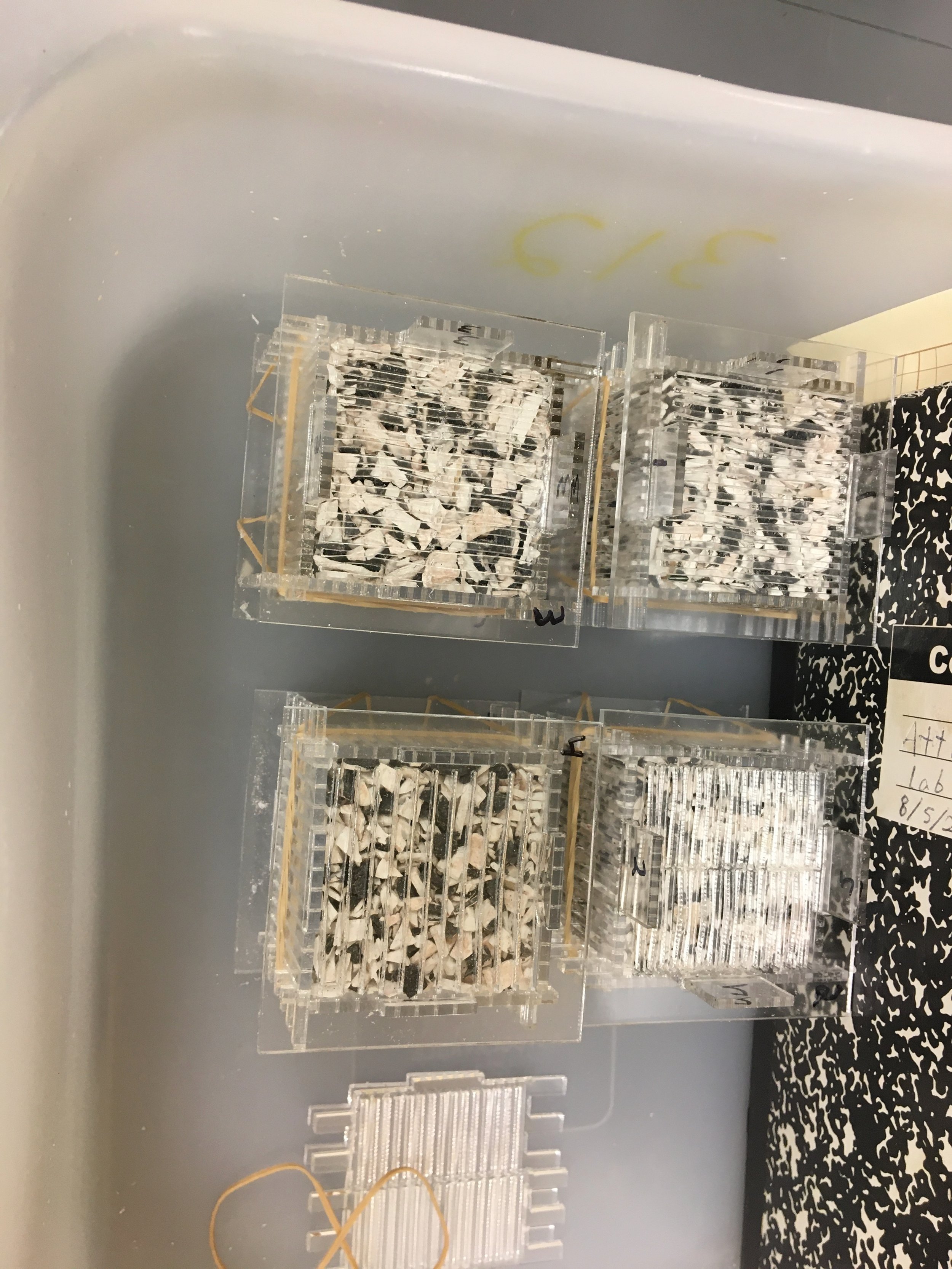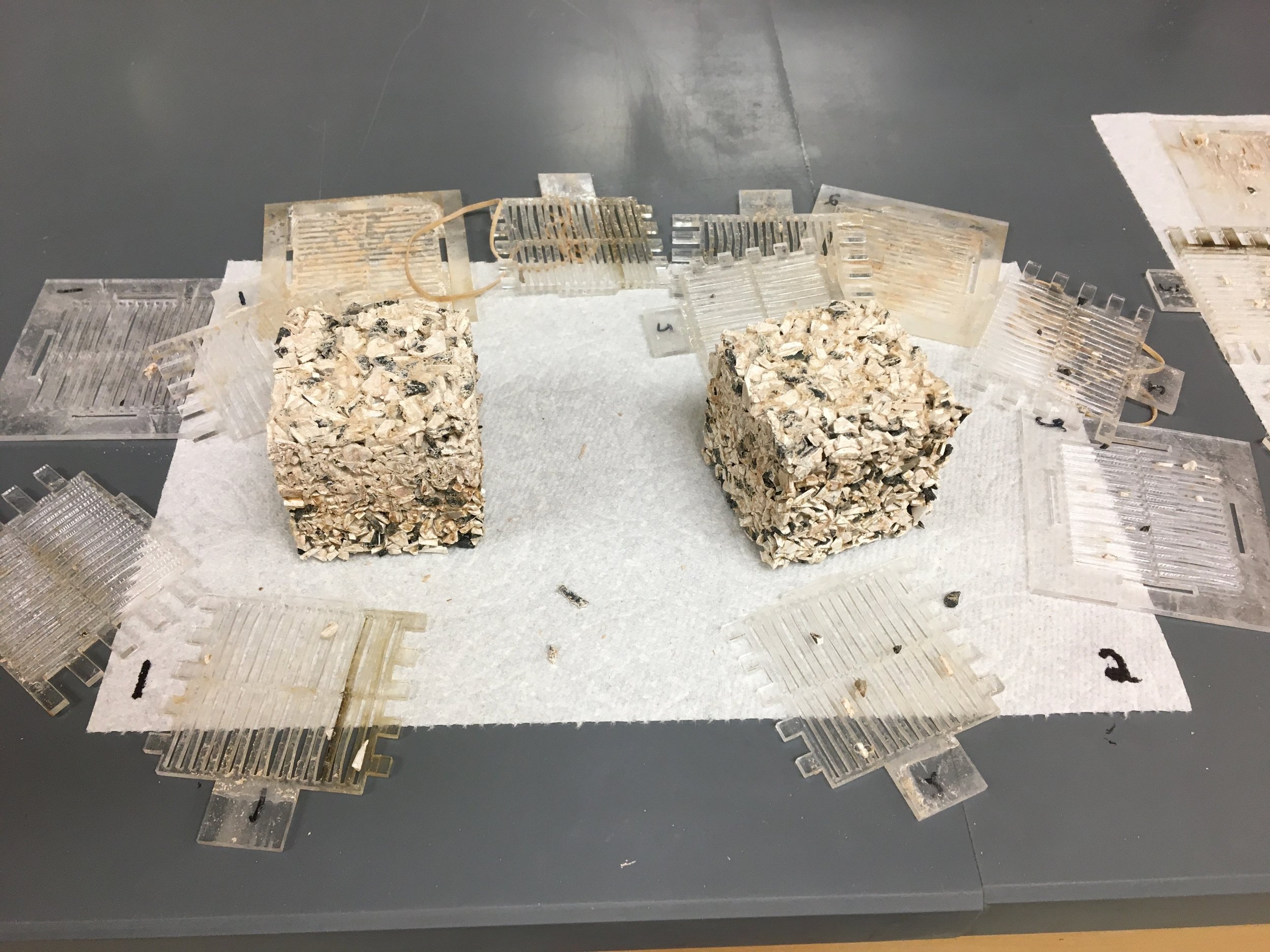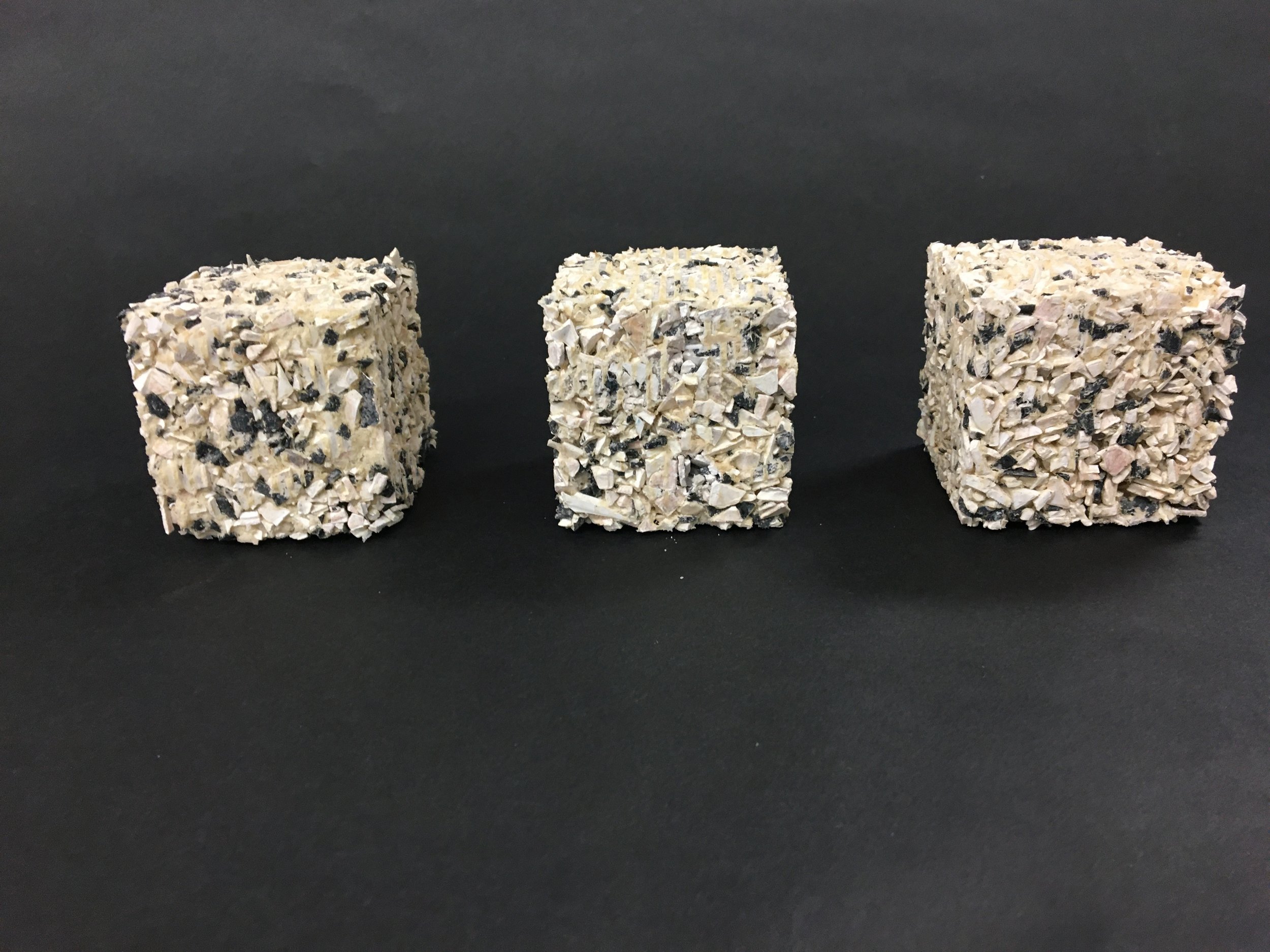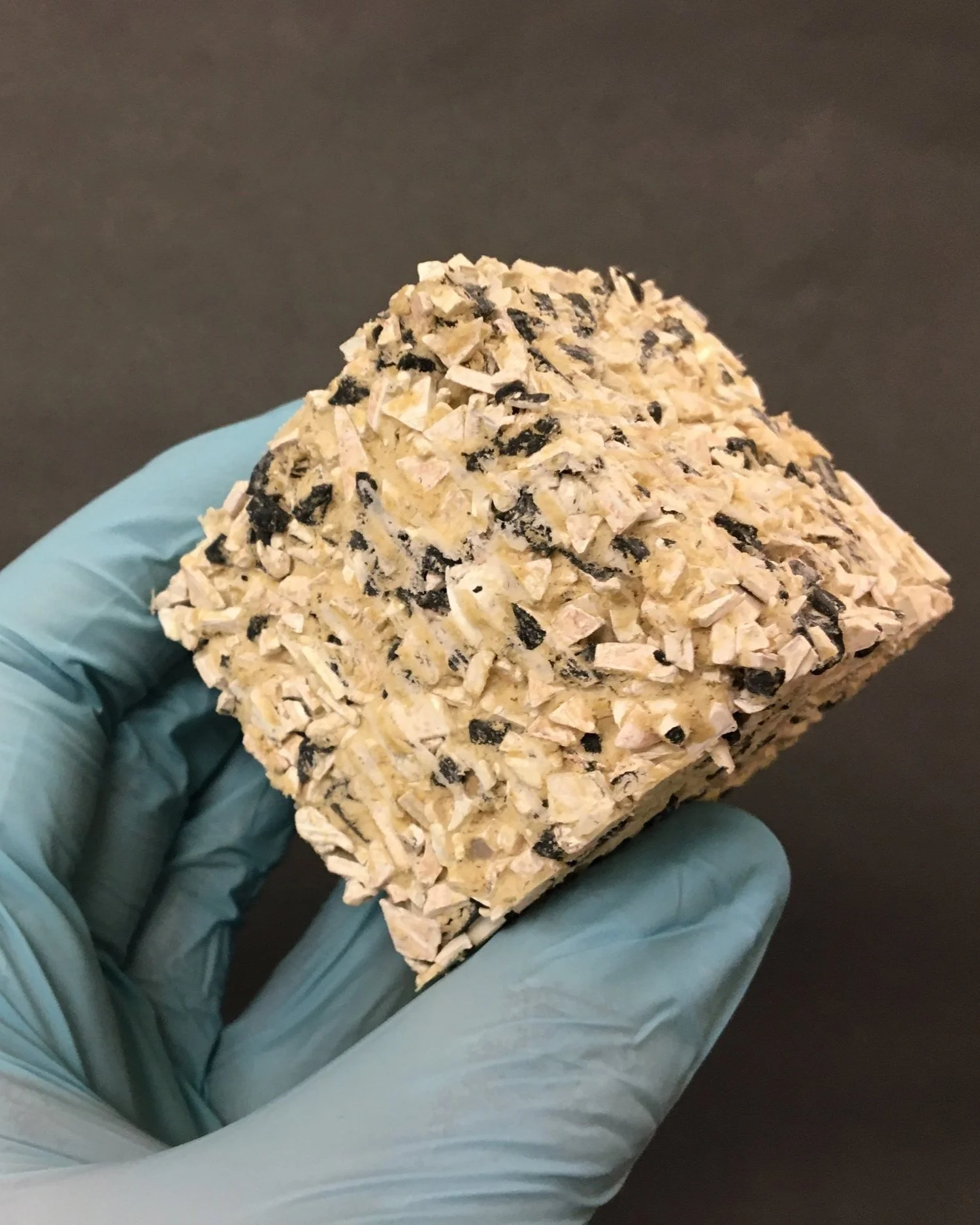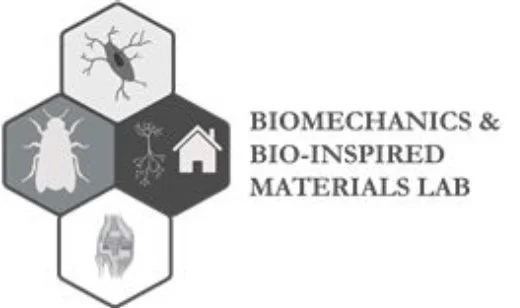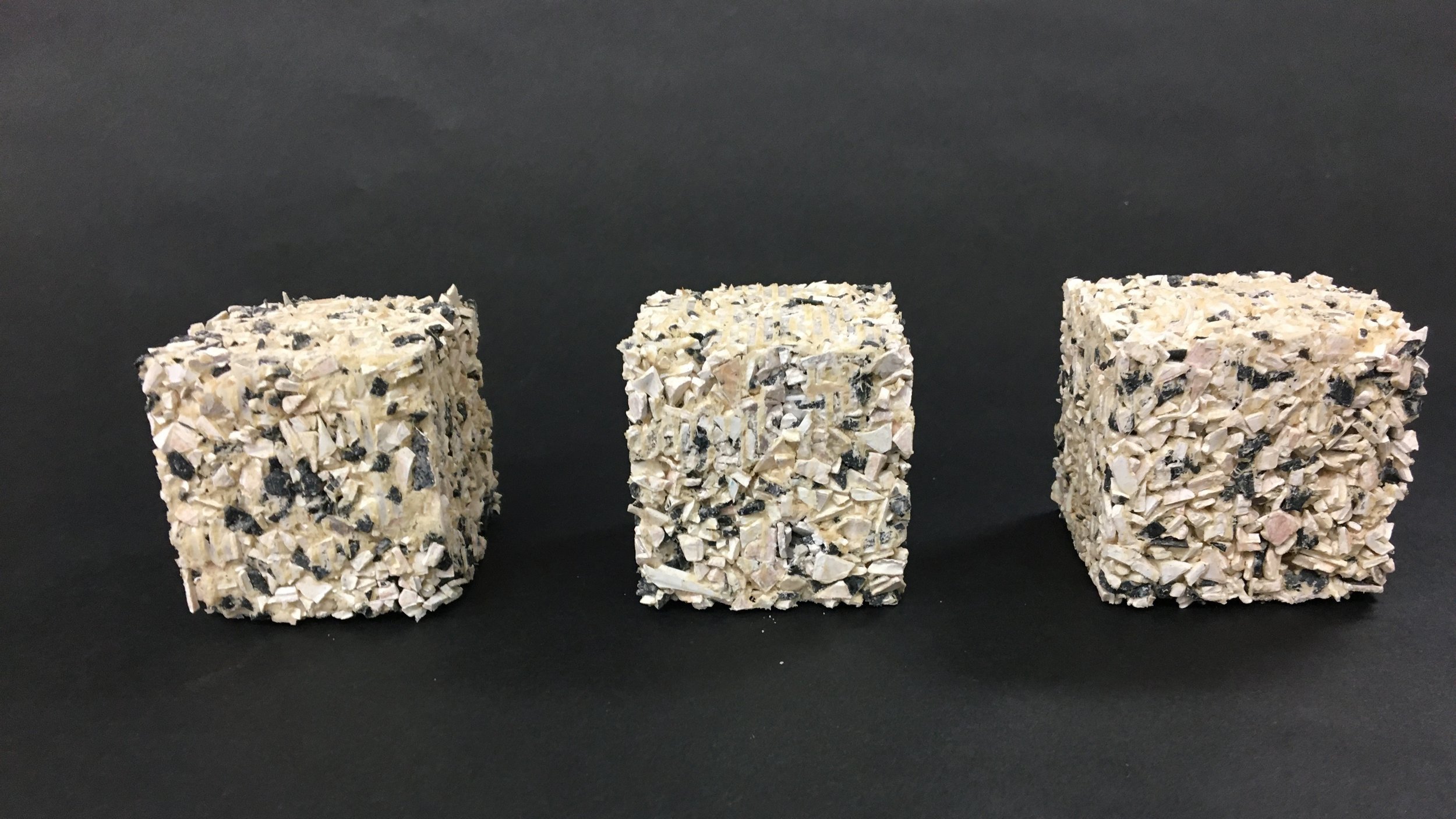
A novel composite: recycled plastic, calcium carbonate, and hydrogel binder
This is the first part in my DIS project series
In the first portion of my DIS Thesis, I engineered a composite material by mineralizing and/or biomineralizing particles of waste plastic
With a plastic-calcium-carbonate-hydrogel composite brick, I investigated possible applications for the material in the built environment as an architectural facade
In the final portion of my DIS Thesis, conducted a sociological survey of building professionals to understand when they might adopt this technology
Summary
Post consumer PVC plastic was bound with an agar hydrogel and calcium carbonate was deposited to produce a composite material. Mineralization was conducted both abiotically, through a simple chemical reaction, and microbially using S. pasteurii microorganisms. Both methods used 94g of plastic aggregate; while the amount of mineral deposition, and therefore also the amount of carbon sequestered, differed. The mineral deposition was low in both abiotic and microbial samples but at 0.431 g/L carbon the microbial samples contained significantly more than the abiotic mineralization with only 0.240 g/L carbon retained in the composite. At present, the composite could effectively sequester a large volume of plastic waste if used at scale; however it should not be considered a significant route of carbon sequestration. It might be possible to offset its own carbon cost of production, though further research would be required to explore this. The primary barrier to using the composite in real world applications is its low compressive strength, 0.13 MPa for the microbially mineralized samples and 0.04 MPa for the abiotically mineralized samples. This means that the microbially mineralized composite has roughly an order of magnitude lower compressive strength than standard clay bricks and the abiotically mineralized version is roughly two orders of magnitude weaker than clay. Additional barriers include cost of production and certain requirements for handling the microbes involved in mineralization. As it stands, the composite presented here is an interesting proof of concept, but significant research is still required before it could be a commercially viable way to transform large volumes of waste into broadly usable building materials.
In the architectural design portion of my thesis I lay out possible visions for creating a building facade that uses a very low load material, such as the current version of this composite, while also mitigating some of the concerns about strength, durability, and aesthetics.
Presented as a component of DIS Thesis Defense May 2023


